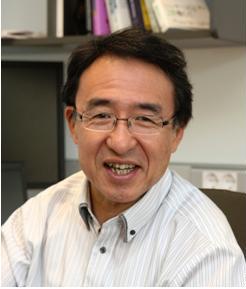 Koh-Ichiro Morita. NAOJ photo.
Koh-Ichiro Morita. NAOJ photo.
Koh-Ichiro Morita
Contributed by Masato Ishiguro
On May 7 2012, Koh-Ichiro Morita, professor at the National Astronomical Observatory of Japan, became a victim of a robbery and fell to a tragic death in Santiago, Chile. He was actively working in Chile for the ALMA project which is under construction in Chile in global partnership of East Asia, Europe, and North America. It is hard to imagine his grief and sorrow from being separated from his beloved family and his research work that would almost bear fruit.
He was born in Fukuoka, Japan in 1954. He studied engineering at Nagoya University and then started to study radio astronomy from 1977 at the Research Institute of Atmospherics of Nagoya University. In 1982, he moved to the Nobeyama Radio Observatory (NRO) under the Tokyo Astronomical Observatory (later developed into the National Astronomical Observatory of Japan) to work for the construction of the millimeter array and played an active role utilizing his expertise in the field of computing, interferometer system control, and aperture synthesis.
In 2006, Koh-Ichiro Morita moved to the ALMA project. In the initial stage of the project, he participated in site survey to find a best observation site, and contributed to the establishment of a huge software system as a member of the ALMA computing group, leveraging his computing knowledge and skills. From around 2000, he started a research to optimize the imaging with the Atacama Compact Array (ACA) which is developed and manufactured by Japan. Based on this study results, he defined the best configuration of the ACA antennas. The effect of the ACA was tested in an ALMA test observation of CO molecular emission from the spiral galaxy M100. The ACA significantly improves the mapping accuracy of ALMA by capturing the missing flux of extended structures that cannot be observed with an array of only 12-m antennas.
In 2010, Koh-Ichiro Morita was transferred to Chile as a member of the Joint ALMA Observatory (JAO) and played an active role as the leader of the system verification team. Since he was not only a world's renowned expert of aperture synthesis but also a gentle and warm-hearted man, he was respected and admired by his colleagues at the JAO. It's a tragedy that he passed away just before the completion of ALMA without seeing it firsthand.
Modified on Monday, 14-Feb-2022 12:01:24 EST by Ellen Bouton, Archivist (Questions or feedback)
|
![[IAU logo]](iau_wb_thumb.jpg)
![[URSI logo]](URSI-logo-thumb.jpg)
![[Karl Jansky at his antenna]](jansky_photo_02_thumb.jpg)
![[Reber's Wheaton antenna]](Reber_Telescope_Wheaton_thumb.jpg)
![[Dover Heights]](Dover_Heights_02_thumb.jpg)
![[4C telescope]](GB61-195_4C_telescope_thumb.jpg)
![[Ewen and horn antenna]](ewen_horn1s.jpg)
![[Dwingeloo, 1956]](Dwingeloo-1956-thumb.jpg)
![[Jocelyn Bell Burnell and Cambridge antenna used in pulsar discovery]](burnell2_thumb.jpg)
![[Lovell Telescope at Jodrell Bank]](site_1594_0001-500-334-20180316163019-thumb150.jpg)
![[Wilson, Penzias, and Bell Labs horn antenna]](wilson-penzias-horn_thumb.jpg)
![[6-m Millimeter Radio Telescope in Mitaka, Japan]](6m-thumb.jpg)

